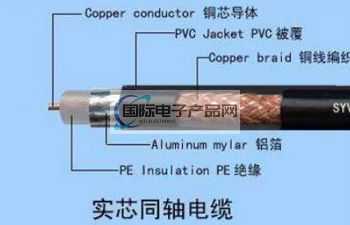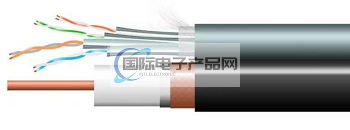Categorization:Product Information
Coaxial cables are probably the most common, basic and easy to understand cables. The so-called coaxial consists of two conductors that will be separated by an insulating material. The center conductor and the outer conductor (or conductors) configuration will form a concentric coaxial cylinder. Coaxial cables are basically used for transmitting electrical energy or signals from one place to another, or for connecting sources and loads such as transmitters and antennas, and are identified and categorized primarily by their impedance or RG type; e.g., 75 Ω coaxial cable or RG-6 type.

-I. What are the basic theories of coaxial cables?1. The center conductor may consist of different materials and construction methods. Most common constructions include solid or 7-wire conductors. Solid conductors are used in applications where sex, infrequent handling, or flexibility requirements are low, while stranded conductors are used in flexible cable applications. Common materials include copper, tinned or silver-plated copper, copper-clad steel, or copper-clad aluminum. Copper plates are used to enhance the solderability of connectors or to minimize corrosion. Copper-clad materials may be used in higher frequency applications due to a phenomenon known as surface effect.2. Insulating or dielectric materials are used to isolate conductors. Insulating materials must have stable electrical characteristics (dielectric constant and dielectric loss factor) over a wide range of frequencies. The most common materials are polyethylene (PE), foamed polyethylene (YFPE), polypropylene (PP), fluorinated ethylene propylene (FEP), and polytetrafluoroethylene (PETE).3. External conductors are primarily a combination of numerous smaller aluminum or copper conductors. These conductors are interwoven to form a braided web around a dielectric center. For higher frequency applications, a second braid or aluminum foil is often added to provide improved attenuation and shielding.4. Sheathing materials are a layer of protection for low grade environments and can also be used to enhance the overall flame retardant properties of the cable. Typical materials include polyvinyl chloride (PVC), PE, FEP and polyvinylidene fluoride (PVDF).

-Second, on the international electronic products network platform related to the introduction and sales of products brief: international electronic products network - a professional agent / production / sales of a variety of {connectors | wiring harness | wire and cable products }; if you have a related [connectors | wiring harness | wire and cable products] purchasing / sourcing needs or would like to buy / to understand which connectors | wiring harness | wire and cable products we can provide solutions, please contact the Division I business personnel below; If you have related [connector | wire harness | wire and cable production] sales / resources and promotion needs, please click on the ¡¡ Business Cooperation ← ¡" to discuss with a person!